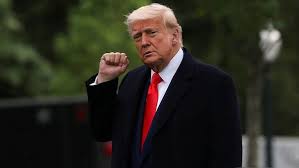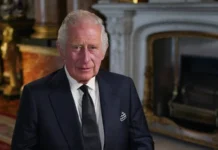There was a time—not too long ago—when “Made in America” wasn’t just a label. It was a legacy. It was the heartbeat of blue-collar patriotism, the sweat and steel of Pittsburgh, Detroit, and Cleveland. It meant something. It meant power. It meant independence. It meant Donald Trump’s America First. But now, in the twilight of Trump’s political theatre and the fog of shifting loyalties, we are forced to ask a very uncomfortable question:
From protecting America to selling America—what changed, Mr President?
Let’s rewind.
In 2023, Nippon Steel, Japan’s industrial heavyweight, came knocking at the doors of America’s storied steel icon—US Steel. At the time, it looked like a potential rescue mission for a fading titan of American industry. US Steel, with its 124-year-old legacy that once helped build everything from tanks in WWII to skyscrapers across America, was struggling to keep up in the brutal global steel economy. The Japanese offer was generous—$14.9 billion with promises of investments, job creation, and retention of the US Steel brand. On paper, a win-win. In spirit, a surrender.
When the deal was first floated, all hell broke loose in the MAGA universe. The chorus was loud and clear: America’s last steel giant must not be sold to a foreign power. Donald Trump himself, then running on the fumes of the America First doctrine, roared with indignation. “We will not let foreign interests dismantle American industry brick by brick,” he declared on the campaign trail. Steelworkers’ unions stood behind him. Joe Biden, too, curiously, took a similar nationalist stand—blocking the deal during the tail-end of his presidency. For once, bipartisan outrage aligned with American pride.
And then came the flip.
Fast forward to 2025—President Donald Trump, now back in power, signs an executive order approving the Nippon takeover. Yes, the same Trump who built his political brand on beating back foreign takeovers. The same Trump who promised Pennsylvania workers that he would be the steel spine America needed. The same Trump who levied 50% tariffs on steel to “protect American producers.” Suddenly, all it took was a few boardroom concessions and a symbolic “golden share” to change the story.
Let that sink in. A golden share. A few board positions. A symbolic seat at the corporate table.
Is this what America First looks like now?
Is this what MAGA 2.0 has become?
This isn’t the art of the deal. This is the art of the U-turn.
The spin from the Trump administration is that the deal saves jobs, promises investment, and keeps the US Steel brand intact. Nippon even promised to pour in $11 billion by 2028. It’s a PR masterpiece. They’ve agreed to headquarter operations in Pittsburgh. Appoint Americans in key leadership roles. Maintain jobs. Keep production “melted and made” in America.
But here’s the inconvenient truth.
Once you hand over ownership, you hand over sovereignty. It doesn’t matter where the board sits. It matters who calls the shots—and that’s now Tokyo, not Washington, D.C. No amount of “America-themed” branding can change the reality that US Steel is no longer American-owned. In the complex web of global industrial chess, ownership is everything. Management pledges are PR. Headquarters locations are cosmetics. And investment promises? They’re often tied to future profitability—meaning if the markets tank or demand shrinks, those promises are the first to be shelved.
Yes, the golden share gives the US government veto power over job relocations and plant closures. But this isn’t national security control—it’s regulatory babysitting. It’s the illusion of control while the real power lies offshore. Can you imagine China or Japan selling their state-defining steel enterprises to American corporations? Never. Because they understand what real sovereignty means.
So what changed Trump’s mind?
Apparently, local officials whispered into his ear about job losses if Nippon didn’t step in. US Steel had made it clear that without the Japanese infusion, job cuts were inevitable. Faced with a choice between national pride and electoral arithmetic, Trump did what most politicians do when survival is at stake—he blinked.
This wasn’t about jobs. It was about headlines.
This wasn’t about steel. It was about swing states. This wasn’t about America First. It was about Trump First.
And the unions? Betrayed but not broken. David McCall, president of the US Steelworkers Union, issued a cautionary statement, noting the “startling degree of personal control” Trump now exercises over this transaction. It was both an observation and an accusation—that corporate independence and political interference are now bedfellows in the Trump administration.
So while MAGA loyalists cheer the optics of a preserved Pittsburgh headquarters and American CEOs, the soul of US Steel has already been signed over, stamped, and shipped to Nippon.
What happens next?
Perhaps the Japanese will honour their commitments. Maybe US Steel will rise again under foreign stewardship. But the precedent has been set—that America’s critical infrastructure is now for sale, so long as the optics are massaged and the political stakeholders are pleased.
This isn’t a one-off. It’s a harbinger. If US Steel can be sold, what’s next? Boeing? Lockheed Martin? Intel?
The steel that once shaped American might is now being forged in the fires of foreign compromise. The President who once held up steel as the spine of his economic nationalism has now become the auctioneer of its legacy. A few years ago, Donald Trump stood on a Pennsylvania stage and shouted, “We are bringing steel back!”
Today, steel is back.
But it no longer belongs to America.
So here’s the real story behind the $14.9 billion deal: it’s not just a transaction. It’s a transformation. From protecting America to selling America, one iconic brand at a time. Under the stars and stripes, a new quiet anthem plays: “Melted and made in America, but owned by the world.”
That’s not America First. That’s America for sale.
And history won’t forget who signed the dotted line.
* Savio Rodrigues is the Founder and Editor-in-Chief of Goa Chronicle.







